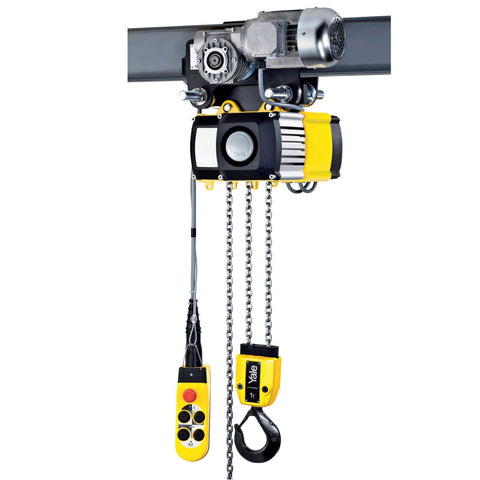Electric Chain Hoists are quintessential equipment in the realm of material handling, essential in numerous industries where heavy lifting is a daily task. These apparatuses are vital for lifting and relocating hefty items, reducing manual labor and enhancing workflow efficiency. But what exactly is an electric chain hoist, and how does it manage to bring about such notable operational benefits? Let’s delve into the dynamics, functionalities, and applications of this remarkable invention.
A Closer Look at Electric Chain Hoists
An Electric Chain Hoist is an electro-mechanical device designed to lift, lower, and move loads with minimal manual effort. It integrates an electric motor and a chain, which together facilitate the lifting and moving of heavy items. It is widely used in construction sites, manufacturing units, warehouses, and any location where materials need to be moved vertically or horizontally.
Key Components
- Electric Motor: This drives the device, converting electrical energy into mechanical energy that propels the chain.
- Chain: Metal links connected together, responsible for lifting and lowering the load securely.
- Hook: Attaches the load to the chain, ensuring a secure and stable grip.
- Control Mechanism: Often a pendant or remote control, this component allows operators to manage the hoist’s movement without physical strain.
- Brake System: It ensures safety by controlling the lowering and positioning of the load.
- Load Chain Guide: Guides the chain to move smoothly without tangling or misalignment.
Types of Electric Chain Hoists
- Single Speed Hoists: Provide consistent speed during the lift and are ideal for straightforward, repetitive tasks.
- Dual-Speed Hoists: Allow users to switch between high and low lifting speeds, offering greater control and precision.
- Variable Speed Hoists: Provide a range of speeds for maximal control, beneficial in environments requiring precise positioning.
Vital Functions and Applications
Lifting with Ease and Precision
Electric chain hoists allow the movement of loads up, down, and across spaces with impeccable precision. The fine-tuned control mechanisms enable operators to navigate items through tight spaces and position them with exactitude, reducing the risk of damage to the materials or the surrounding environment.
Ensuring Safety and Reducing Labor Strain
By mitigating the need for manual lifting, electric chain hoists not only amplify operational efficiency but also safeguard workers from potential injuries. They minimize physical strain and reduce the likelihood of accidents related to heavy lifting and movement.
Bolstering Productivity
The streamlined and efficient handling of materials, facilitated by electric chain hoists, inevitably boosts productivity. Tasks are accomplished faster, and workers can allocate their energy and focus to other critical aspects of the operational process.
Versatility in Various Industries
- Manufacturing: Facilitates movement of raw materials, components, and finished goods.
- Construction: Essential for lifting building materials, tools, and sometimes, workers.
- Automotive: Utilized for moving parts and assemblies.
- Shipping and Warehousing: Vital for loading, unloading, and arranging goods.
The Future: Going Beyond Lifting
As technology permeates every sphere of industrial operations, the humble electric chain hoist is also witnessing evolutions. Integration with IoT devices, automated systems, and enhanced safety features, the future of electric chain hoists looks set to elevate the standards of material handling.
In a world that’s steadily embracing technological advancements, the electric chain hoist stands out as an unsung hero, quietly shouldering the weight and propelling industries forward. By ensuring the safe, precise, and efficient movement of materials, it plays an integral role in amplifying operational efficacy and safeguarding the well-being of workers across diverse sectors. It’s not just a tool for lifting; it’s a mechanism for elevating operational standards, one lift at a time.

